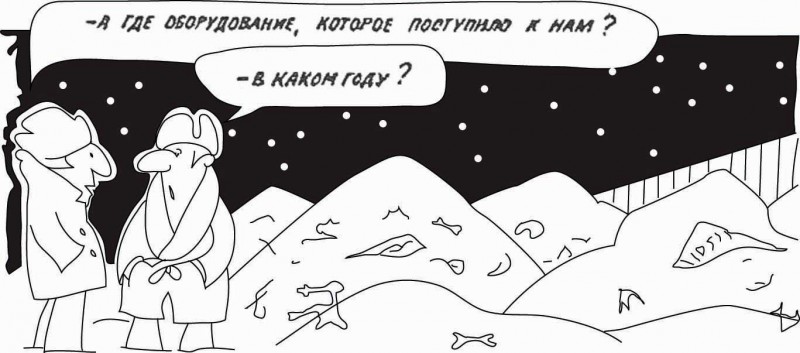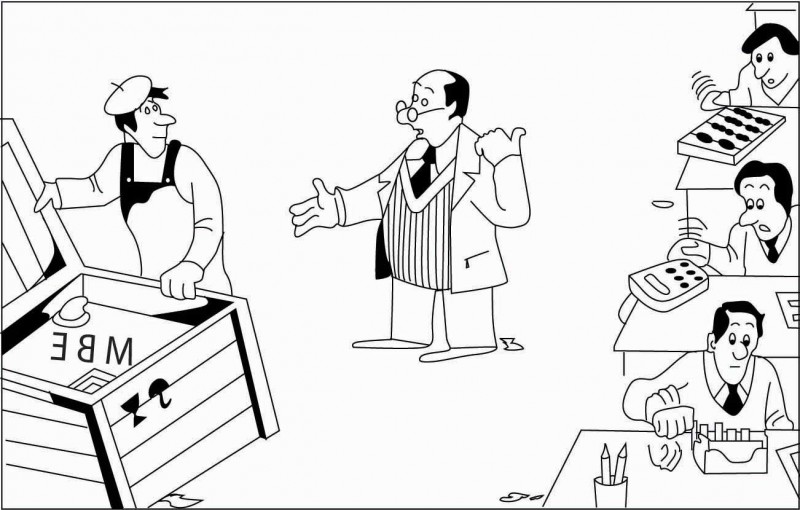Soviet leaders placed great emphasis on Marx’s concept of the inevitable collapse of capitalism. While they downplayed the likelihood of a global revolution, they argued that the inherent superiority of socialism would gradually become apparent. Countries would adopt the socialist model in order to improve their living standards, and socialism would gradually assert itself as the dominant world system.
One key to achieving the goal of a socialist world was to outperform the United States economically. Stalin promised in the 1930s that the Soviet economy would surpass that of the United States within a few decades. The goal was clearly not achieved. Indeed, it was the gradual realization that the command socialist system could not deliver high living standards that led to the collapse of the old system.
Figure 20.1 shows the World Bank’s estimates of per capita output, measured in dollars of 1995 purchasing power, for the republics that made up the Soviet Union, for the Warsaw Pact nations of Eastern Europe for which data are available, and for the United States in 1995. Nations that had operated within the old Soviet system had quite low levels of per capita output. Living standards were lower still, given that these nations devoted much higher shares of total output to investment and to defense than did the United States.

Per capita output was far lower in the former republics of the Soviet Union and in Warsaw Pact countries in 1995 than in the United States. All values are measured in units of equivalent purchasing power.
Source: United Nations, Human Development Report, 1998.
Ultimately, it was the failure of the Soviet system to deliver living standards on a par with those achieved by market capitalist economies that brought the system down. Market capitalist economic systems create incentives to allocate resources efficiently; socialist systems do not. Of course, a society may decide that other attributes of a socialist system make it worth retaining. But the lesson of the 1980s was that few that had lived under command socialist systems wanted to continue to do so.
KEY TAKEAWAYS
- In the Soviet Union a central planning agency, Gosplan, set output quotas for enterprises and determined prices.
- The Soviet central planning system was highly inefficient. Sources of this inefficiency included failure to incorporate consumer preferences into decisions about what to produce, failure to take into account costs of factors of production, setting of prices without regard to market equilibrium, lack of incentives for incorporating new technologies, overemphasis on capital goods production, and inattention to environmental problems.
- Yugoslavia developed an alternative system of socialism in which firms were run by their workers as labor cooperatives.
- It was the realization that command socialist systems could not deliver high living standards that contributed to their collapse.
TRY IT!
What specific problem of a command socialist system does each of the cartoons in the Case in Point parodying that system highlight?
Case in Point: Socialist Cartoons
These cartoons came from the Soviet press. Soviet citizens were clearly aware of many of the problems of their planned system.

“But where is the equipment that was sent to us?” “Which year are you talking about? |

“But Santa, it’s winter, so we asked for boots for our son!” “I know, but the only thing available in the state store was a pair of sandals.” |
 “Why are they sending us new technology when the old still works?” |
ANSWER TO TRY IT!
The first cartoon shows the inefficiency that resulted because of the failure to take into account the costs of factors of production. The second cartoon shows the difficulty involved in getting business to incorporate new technologies. The third shows the system’s failure to respond to consumers’ demands.
- 2996 reads






